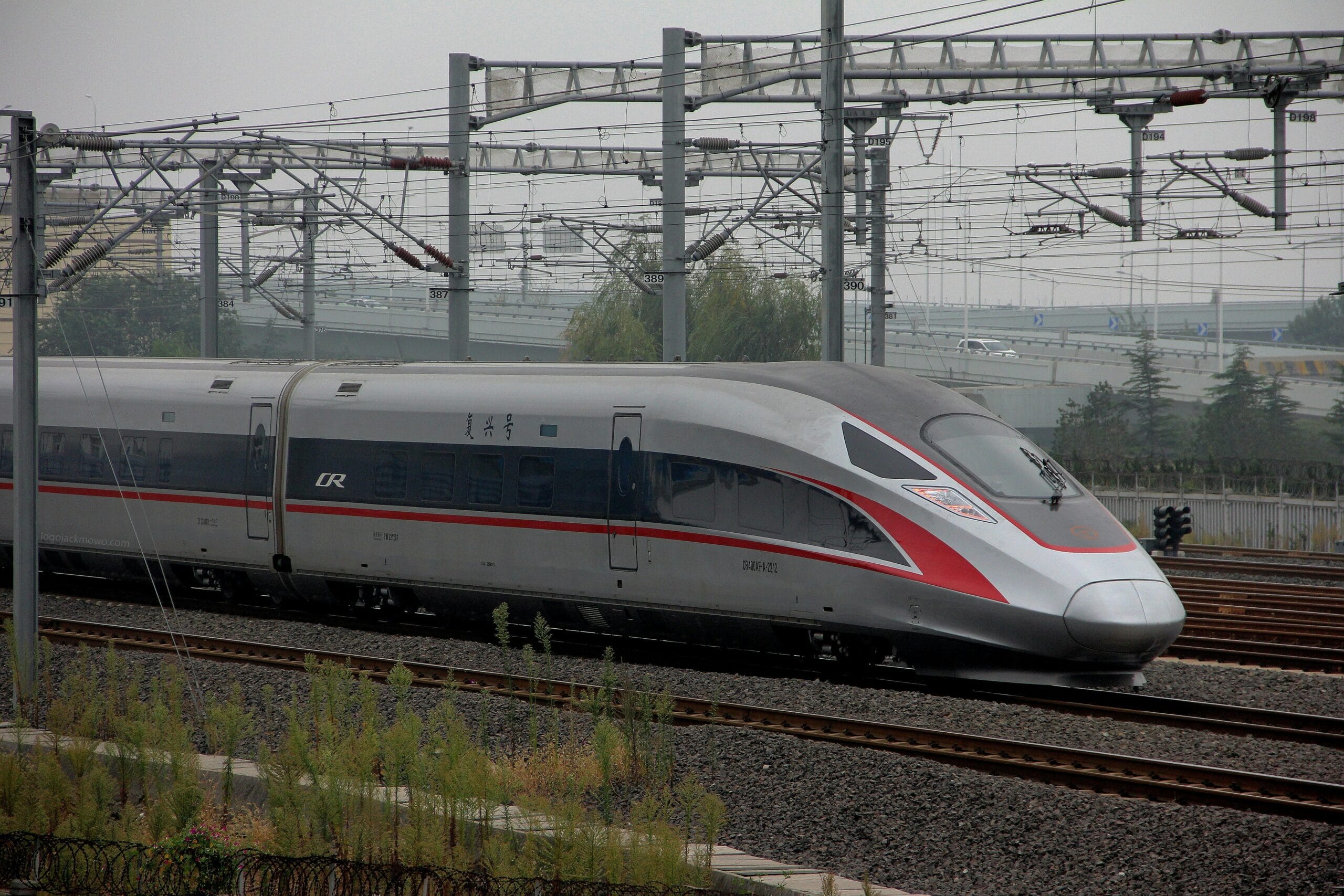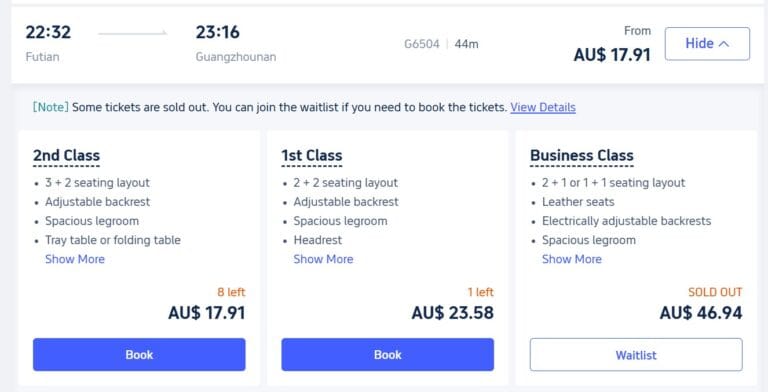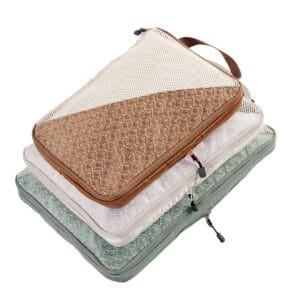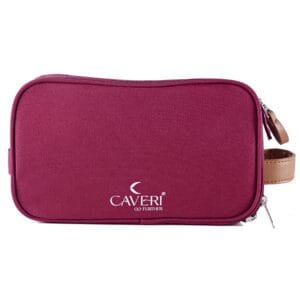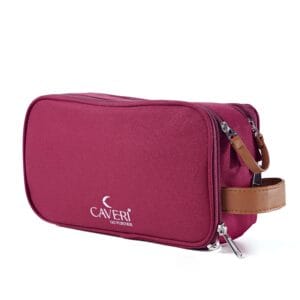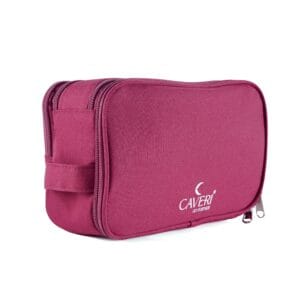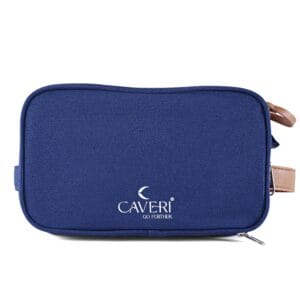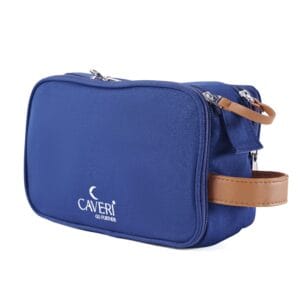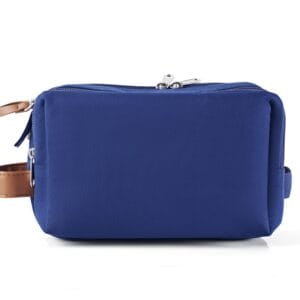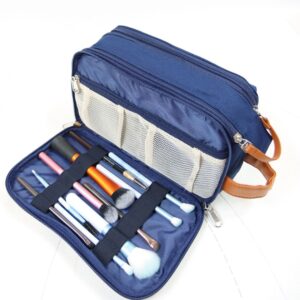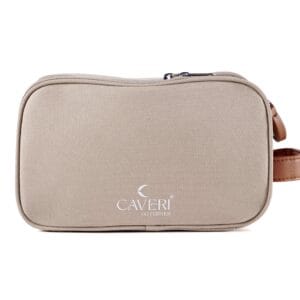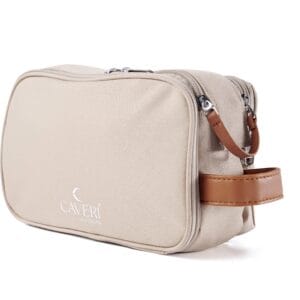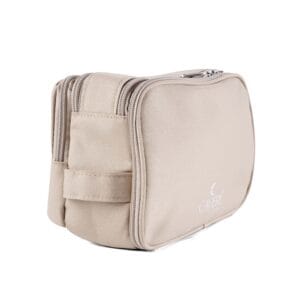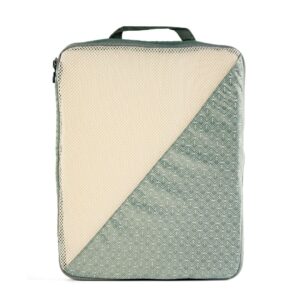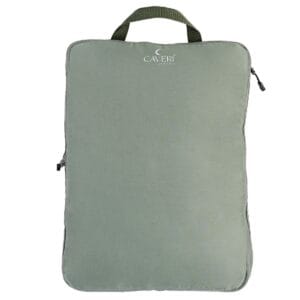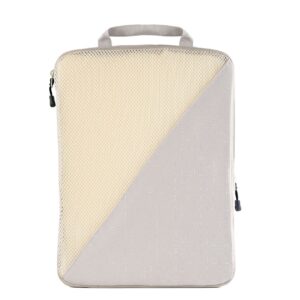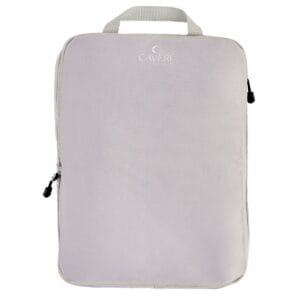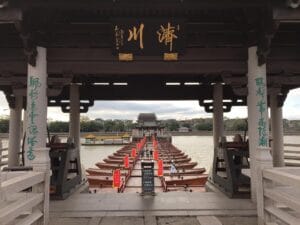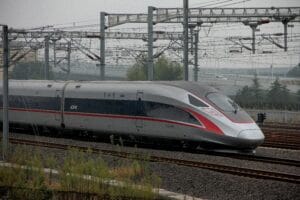The Ultimate Guide to China’s High-Speed Rail
What Every Traveler Needs to Know
China’s high-speed rail network is world-class-fast, modern, and connecting nearly every major city. After a month of exploring China by train, we’re sharing everything you need to know to make your journey smooth, from booking tickets and choosing the right class to navigating stations and boarding stress-free.
This article is based on our personal experience using multiple high speed trains during our 1 month travel in China.
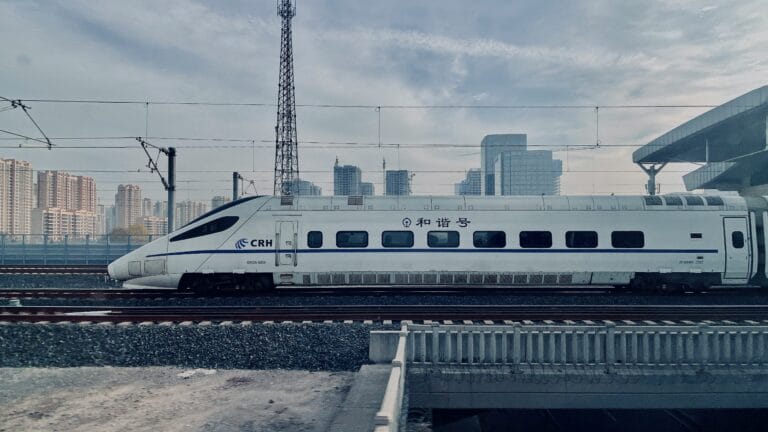
Buying High-Speed Rail Tickets
Tickets become available 14 days in advance and can be reserved online. The official China Railway site (12306.com) gives booking priority to its users, so tickets purchased here are fulfilled first. Business Class tickets, in particular, are extremely popular and can sell out within minutes, especially on busy routes. If your preferred class is unavailable, keep checking as tickets often reappear due to cancellations, and the cancellation policy is quite flexible with low penalties if canceled more than 24 hours before departure.
Note there are also many different stations for one region as well. For example, Guangzhou railway stations include:
– Guangzhou Railway Station
– Guangzhounan Railways Station (South)
– Guangzhoudong Railway station (East)
– Guangzhoubei Railway Station (North)
– Xingtang Railway Station
– Guangzhou Baiyun Railway Station
Make sure you know which railway station you are departing from or arriving at.
This is the official website for China High Speed Ralway tickets, and is the most direct and cheapest way to book. However, the process can be challenging for foreigners. Passport verification is required for each traveler. Once verified, you can book tickets for your entire group. I personally had difficulty verifying all the travellers, however my partner was able to verify all of us, so we used his account to purchase all our high speed rail tickets. You can verify before you arrive in China and we recommend pre-purchasing tickets whenever possible. It is worth getting this to work if possible, as it is the cheapest and most direct way to book your high speed rail ticket, and especially if you intend to purchase multiple trips.
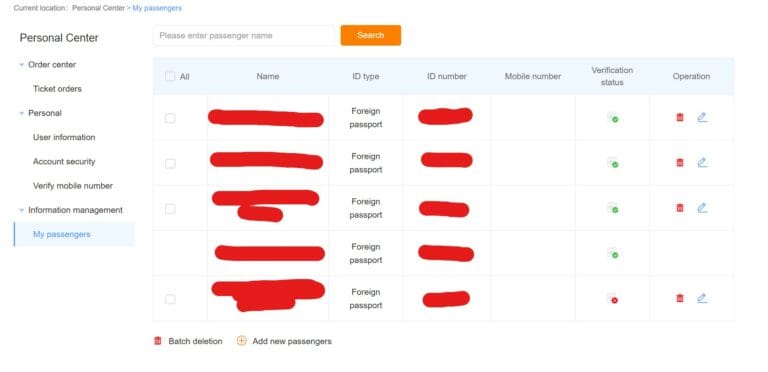
At The Station
You can buy tickets at any railway station ticket window. Bring your passport for all purchases-this is mandatory for foreigners. You’ll only be able to get whatever tickets are available at that time. For busy holiday periods and destinations, this may mean standing tickets only.
Third Party Apps
Trip.com makes booking China’s high-speed rail tickets incredibly straightforward for international travelers. The platform offers a fully English interface, accepts all major credit cards, and lets you pay in your preferred local currency before you travel. This ease of use, combined with support for e-tickets, makes Trip.com the most convenient option for foreigners booking train journeys in China. Make sure you add all passengers and verify them prior to purchasing your tickets.
There is a booking fee of $4 AUD per ticket, which is non-refundable. However, if you’re a platinum-tier member, this fee becomes fully refundable. Personally, I found Trip.com not only seamless for booking but also rewarding: I was able to use my Trip Coins to pay for tickets, and I even redeemed free train tickets using Trip Coins alone.
If your preferred train or class is sold out, you can join a waitlist for your selected route. For busy lines, try searching different departure times or seat classes to increase your chances of securing a ticket.
Once every quarter, China’s high-speed rail network undergoes timetable adjustments. During these periods, train tickets are often not released on the usual 15-day advance schedule. Instead, ticket sales may open only 10–12 days before departure. If you notice that a large number of trains are unavailable when checking 15 days ahead, this is likely the reason. To secure your preferred train, you’ll need to check ticket availability daily, as tickets will be released as soon as the new schedules are finalized. This is a common occurrence, so persistence is key during timetable change windows.
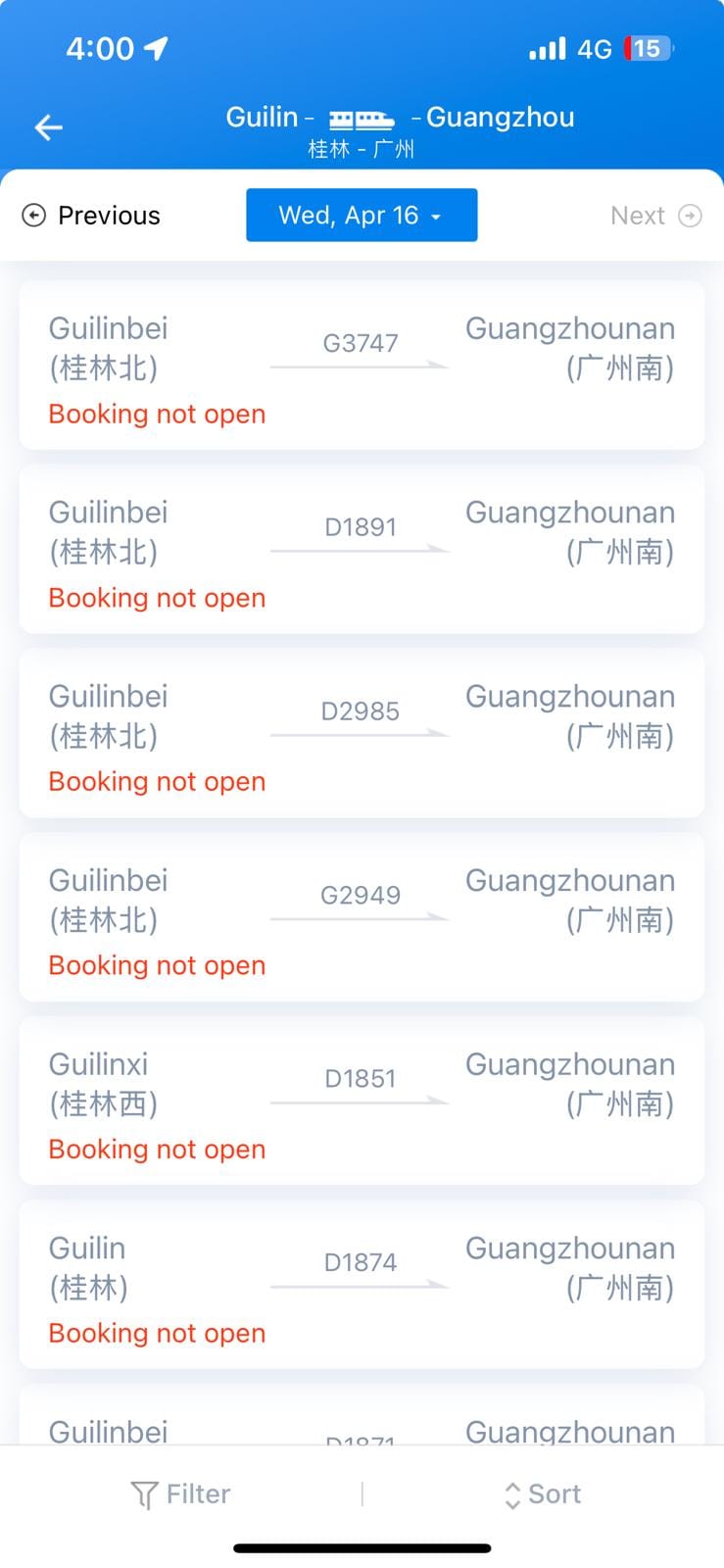
As well as being China’s primary chat app, WeChat contains a number of mini-apps, one of which is “Rail and Flights”. Personally we did not use this to purchase our train tickets, as we could purchase through the 12306 app itself with my partner’s account full verified, and used Trip.com as a fallback option. You may need to ensure all users are also verified as well, which was easier to do in Trip.com being a full english interface.
Once you have created your WeChat account:
open WeChat –> Pay and Services –> Rail and Flights
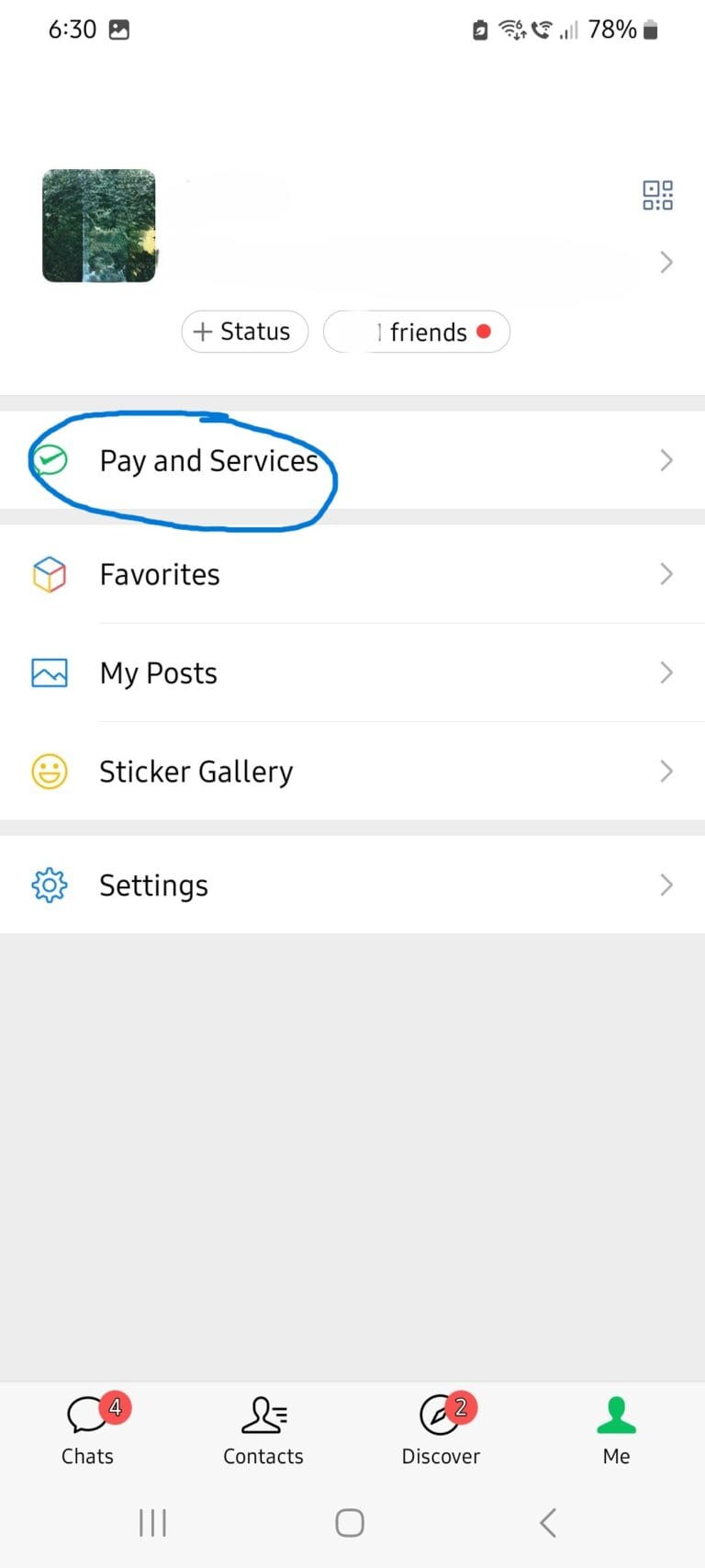
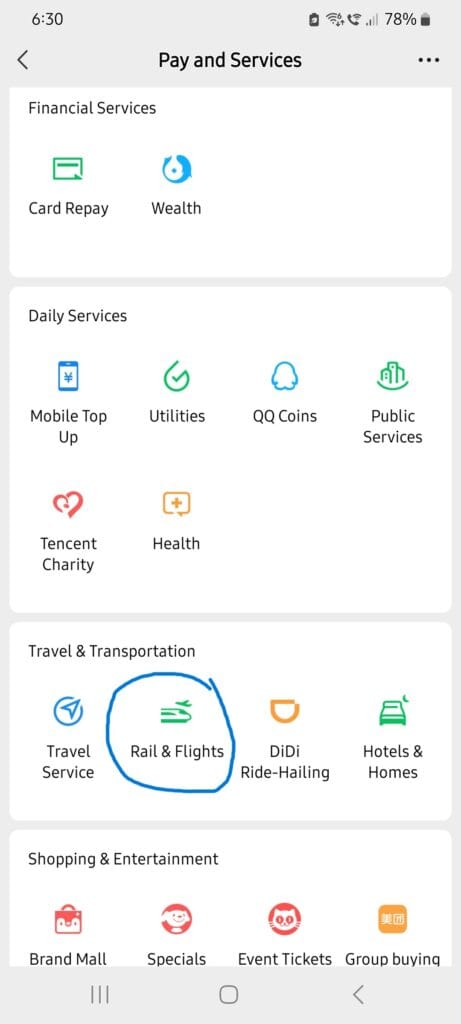
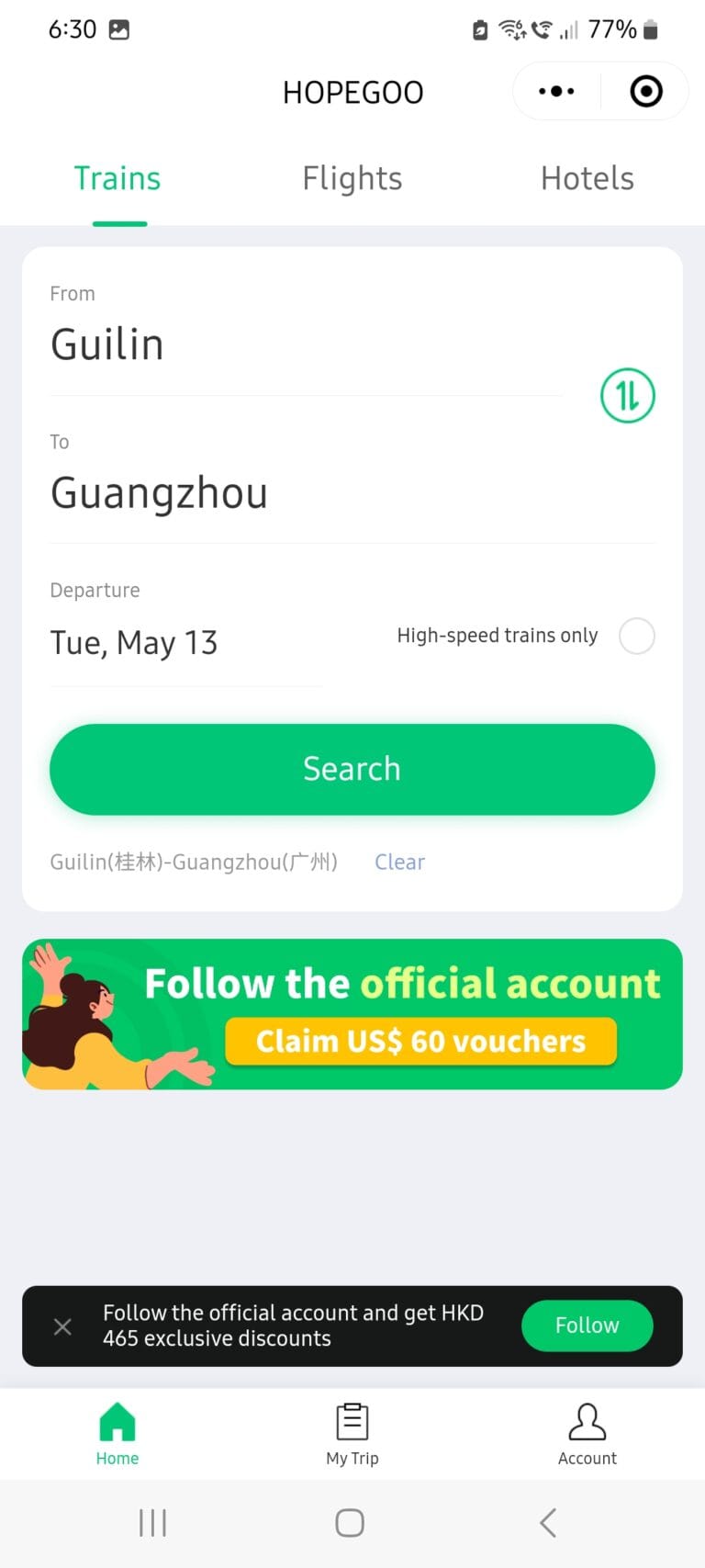
Alipay
Alipay is my favourite app for payments, and also has a train mini-app. Once your account is created:
Open the Alipay App –> More –> Railroad 12306

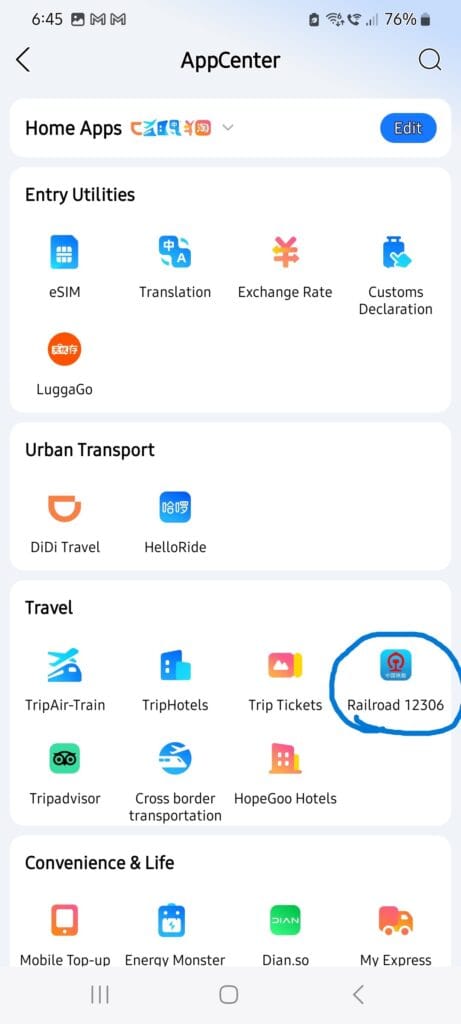
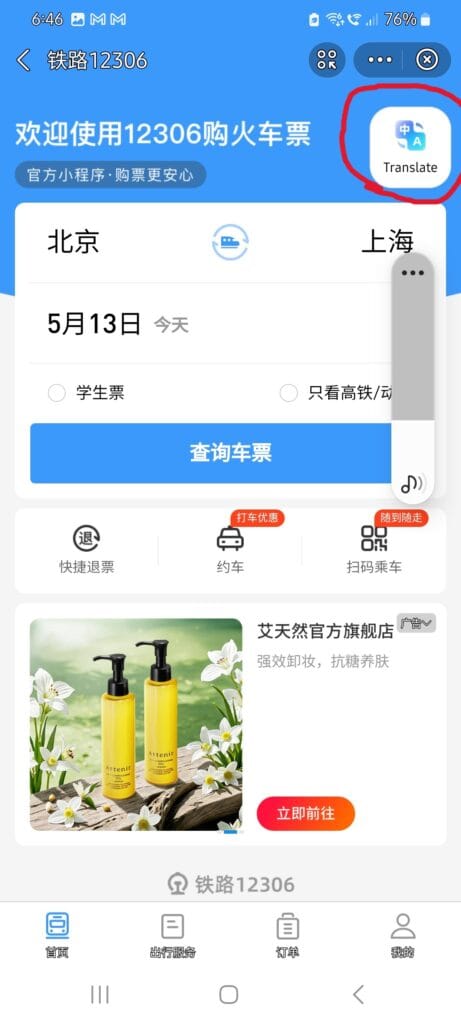
What You Need:
• A valid passport (for all travelers in your group).
• Your travel dates, departure and arrival cities, and preferred train/class.
E-Tickets vs. Paper Tickets:
• Most routes now support e-tickets: your booking is tied to your passport, so you don’t need a paper ticket to board.
• If e-tickets aren’t available, you’ll need to collect a physical ticket at the station’s ticket counter before your journey. Allow extra time for this, especially during busy periods.
Classes on China's High-Speed Trains
Class Type | Seating & Comfort | Features | Price Level |
Second Class | 5 seats per row (3+2) | Basic comfort, foldable tray, power outlets | Lowest |
First Class | 4 seats per row (2+2) | Wider seats, more legroom, quieter carriage | Moderate |
Business Class | 3 seats per row (2+1) | Lie-flat seats, premium service, very quiet | Highest |
VIP/Premium First | Limited availability | Extra luxury, sometimes private cabins | Highest |
Standing Only | Standing between carriages | Pre-Assigned carriage and standing between carriage | Same as second class |
Sleepers | On select overnight trains | Soft sleeper, deluxe soft sleeper options | Varies |
Second Class is similar to economy on a plane-comfortable for most journeys and the best value.
First Class offers more space and quieter cars.
Business Class is comparable to airline business class, with lie-flat seats and extra perks-a splurge for long journeys.
Sleepers are only available on some overnight high-speed trains.
Business Class is the gold standard for comfort. Seats recline fully flat, and you’ll find slippers at your seat, and you can request a blanket. Meals, snacks, and drinks are included, and you’ll have a dedicated attendant. The carriage is quiet, with just 5–12 seats per cabin. Business Class seats are not always cleaned between passengers, so bring sanitary or wet wipes for peace of mind.
Onboard, the service will vary depending on your attendant, we had some amazing attendants and also some who weren’t so attentive. You’ll be served a hot meal (timed to breakfast, lunch, or dinner hours), soup, a snack box, and a drink. The carriage is quiet and intimate, typically with just 5–12 seats per cabin, so it never feels crowded. There’s ample room for luggage, and your attendant is always on hand to help.
Business Class passengers also enjoy access to exclusive lounges at major stations, with snacks, drinks, Wi-Fi, and private washrooms. Don’t expect airline quality lounges, its more like a private space for you to unwind. The best part about Business class seating is that When it’s time to board, business class passengers enjoy priority boarding and a direct escort to your carriage-a huge advantage given the short boarding window and potential confusion.
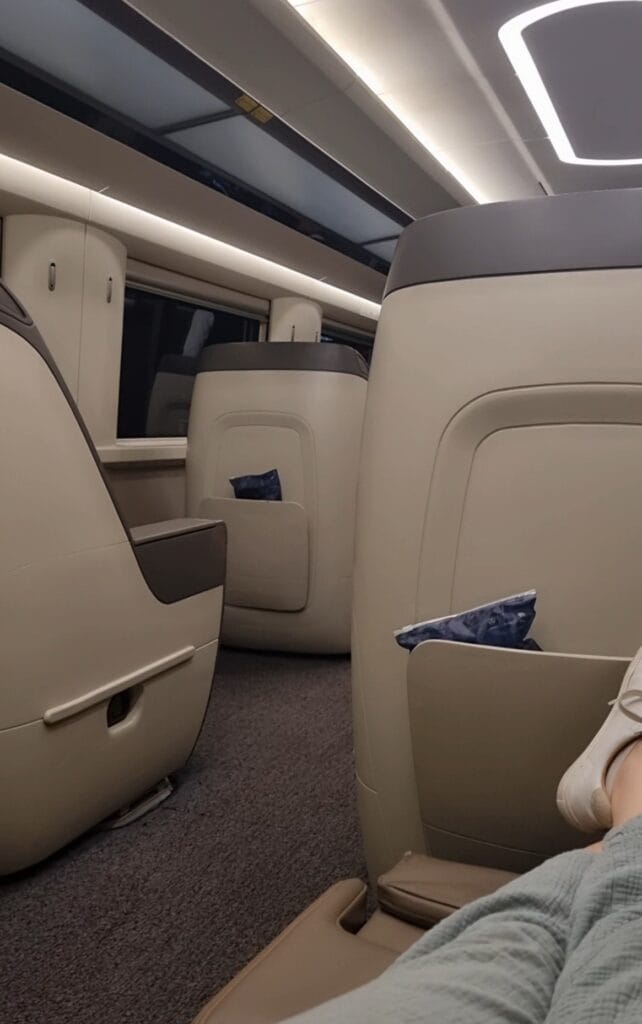
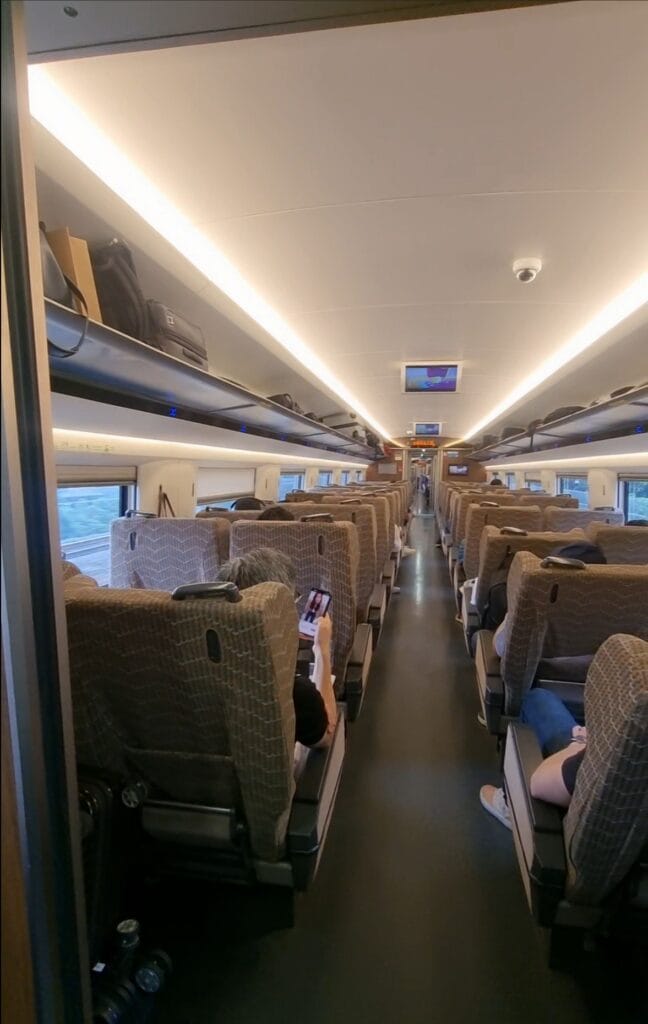
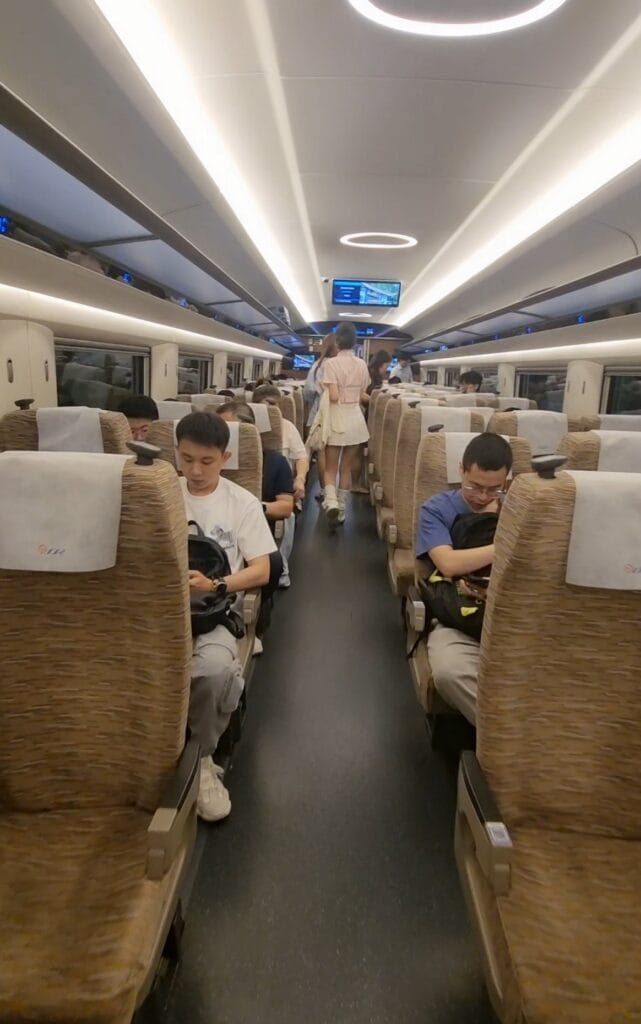
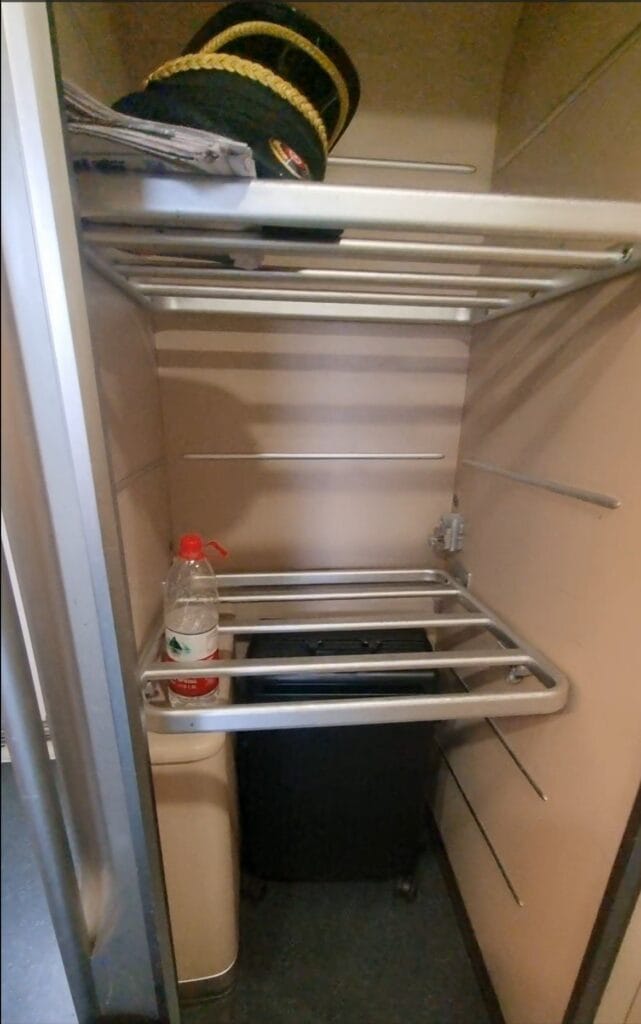
From personal experience, the difference between First and Second Class is mostly in seat width and carriage ambiance. First Class is a bit more spacious and less crowded, but not dramatically different in comfort. For journeys under 2.5 hours, First Class is more than adequate. For longer trips or special occasions, Business Class is absolutely worth experiencing.
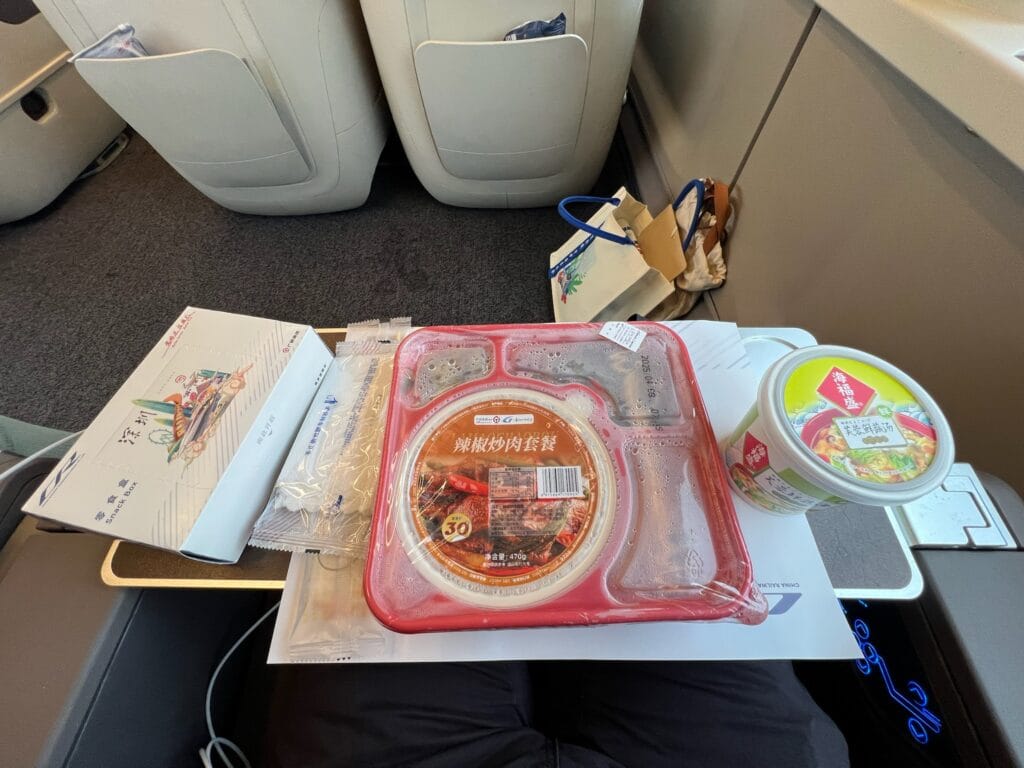
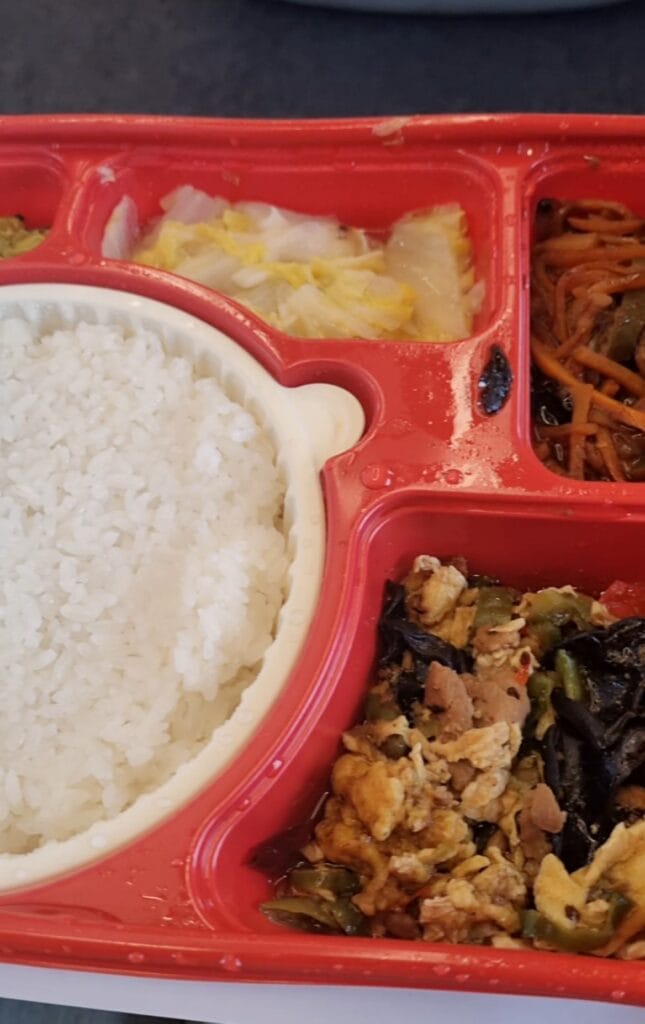
Boarding Your High Speed Train
Boarding high-speed trains in China can be surprisingly stressful, even if you’re well-prepared and arrive early. The biggest challenge is the very short window between when the gates open and when you’re actually able to board your train. For most passengers, gates open just 14 minutes (on the dot) before departure; Business Class passengers get a slight advantage, with gates opening 18 minutes prior and fully escorted to their carriage. This means hundreds if not thousands of people are funneled onto the platform at once, and the rush can feel intense.
At the Station
Security Check
All bags go through X-ray screening. Have your passport and ticket (or e-ticket confirmation) ready.
Find Your Gate
Departure boards are in Chinese and English at major stations. Match your train number and departure time. Gates close 5 minutes before the train leaves-don’t be late!
Ticket Validation
For all online purchases, you’ll only need your passport. Go directly to the security check and then to the boarding gate. Show your passport and your booking is linked to it.
Paper Ticket Holders: Show your ticket and passport at the gate.
Passport Scanners: At some gates, place your passport on the scanner. If there’s no scanner or if you have any issues, simply proceed to staff nearby for assistance.
Tip: Many stations are huge and may be outside the city center. Plan your transfer time accordingly and always check which station your train departs from. Note also that the railway stations are different to the metro stations.
Boarding
Even though most signs are bilingual, trying to get to the right carriage can be overwhelming. Platforms are divided into multiple sections, each serving different train carriages. You’ll need to double-check the departure board or your ticket for your carriage number and sometimes a color code. We’ve found ourselves on the wrong end of the platform more than once, having to dash from one end to the other to reach the correct carriage before the doors closed. The color-coded system isn’t always intuitive, and you may need to ask for help.
For families or anyone with luggage, this last-minute scramble can be stressful. Our tip: as soon as you’re let through the gate, move quickly and keep an eye out for carriage markers along the platform. Be ready to move as soon as boarding opens.
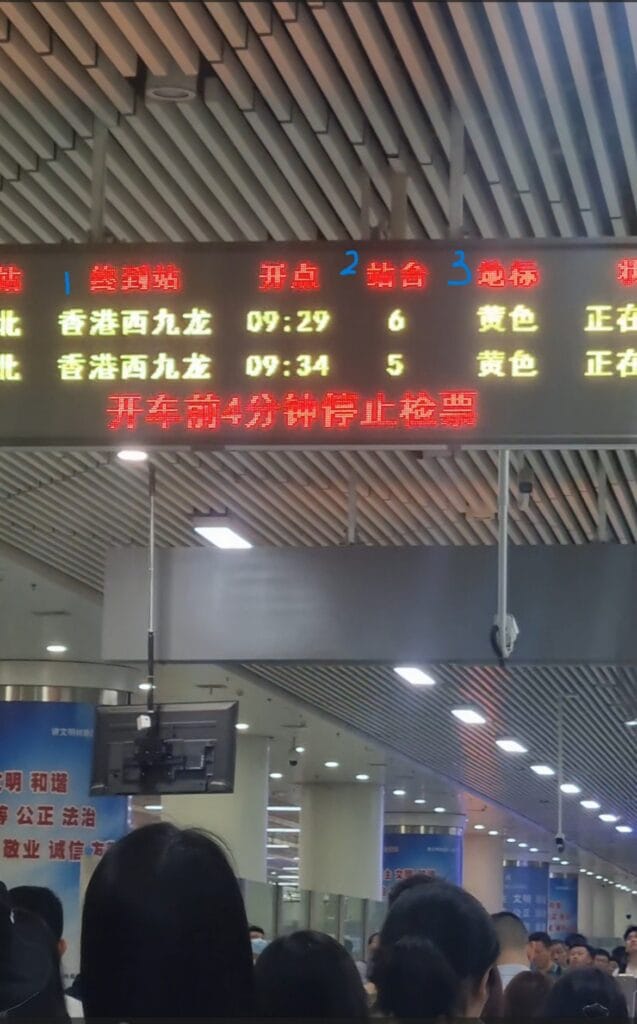
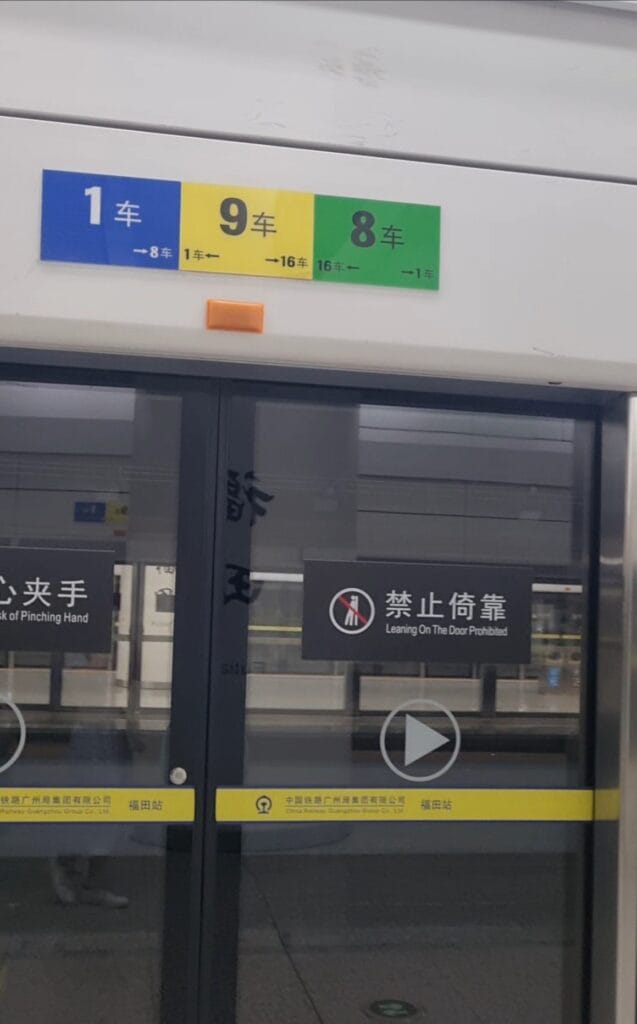
On Board
Seats: Your seat number is printed on your ticket or e-ticket confirmation.
Luggage: Store large bags on racks at the end of the carriage; smaller bags fit overhead.
Facilities: All trains have toilets, hot water dispensers, and food/drink trolleys.
Luggage on High Speed Rail
Many railway stations in China are located underground with lots of stairs. While escalators are more common than elevators, they are not always available at every exit, and elevators-when present-tend to be slow and hard to find. If you’re traveling with heavy luggage, it’s essential to plan ahead.
From personal experience, navigating railway stations with lots of luggage is particularly challenging in China. On one occasion, after arriving on a slow train to Guangzhou (tickets were sold out for the fast train), I found myself at a station with no escalators or lifts. Managing a large suitcase (16KG) down steep stairs was dangerous, and there was no assistance from staff or fellow passengers. If you’re carrying bulky or heavy bags, consider traveling light or avoiding older stations and slow trains where accessibility will be limited.
The most difficult part was when, still struggling to get my suitcase down one step at a time, the gates opened for the next wave of incoming passengers. Suddenly, I was caught in a crowd moving against me, making it even harder to maneouver my luggage and get to the exit safely. If you have large bags or heavy luggage, be prepared for situations like this and aim to pack as lightly as possible for a smoother journey through busy and sometimes less accessible stations.
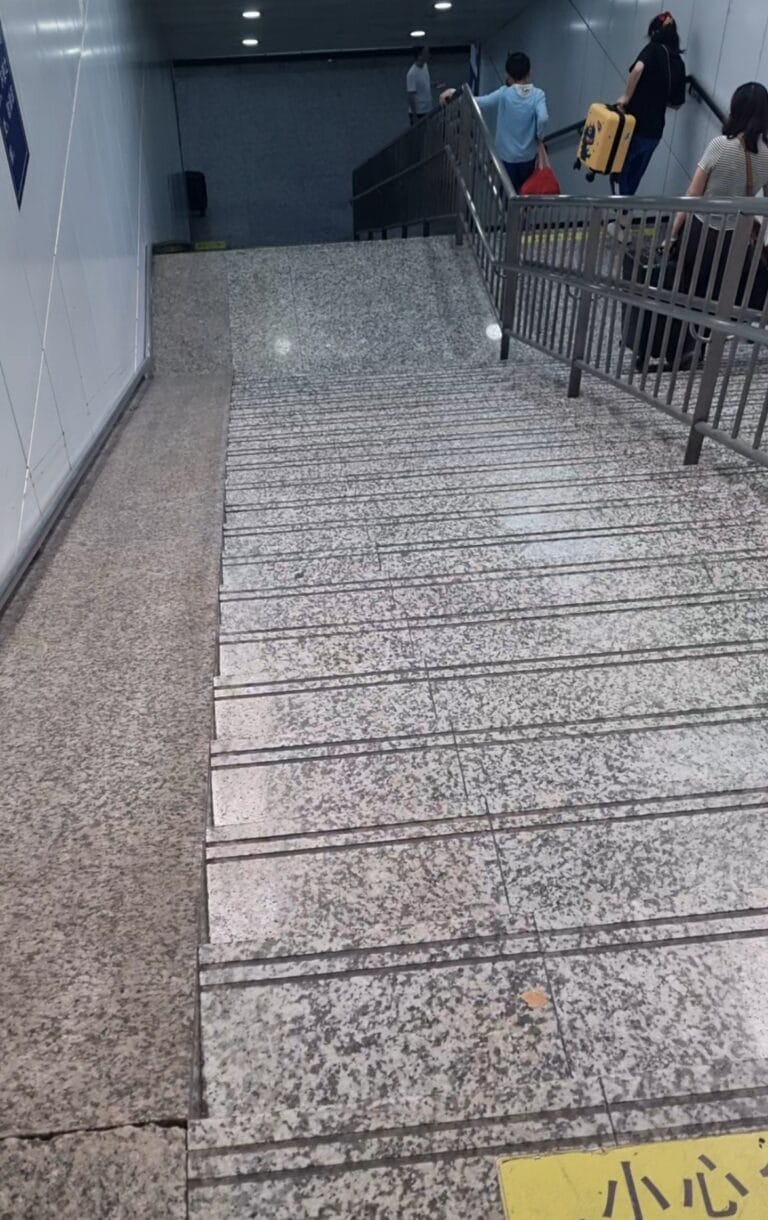
Final Thoughts
Traveling by high-speed rail in China is fast, comfortable, and often the best way to see the country. With the right preparation, booking is straightforward, and the boarding process is efficient if you arrive early and have your documents ready. Choose your class based on your comfort needs and enjoy the ride-China’s high-speed trains are an experience in themselves. However, take into consideration the real challenges with luggage in railway and metro stations. Until China enforces stricture regulations around accessibility requirements, it can be challenging traveling with lots of luggage.
We used Caveri Compression Packing Cubes for our entire month traveling in China, and found it an indispensable tool for traveling light and efficiently.

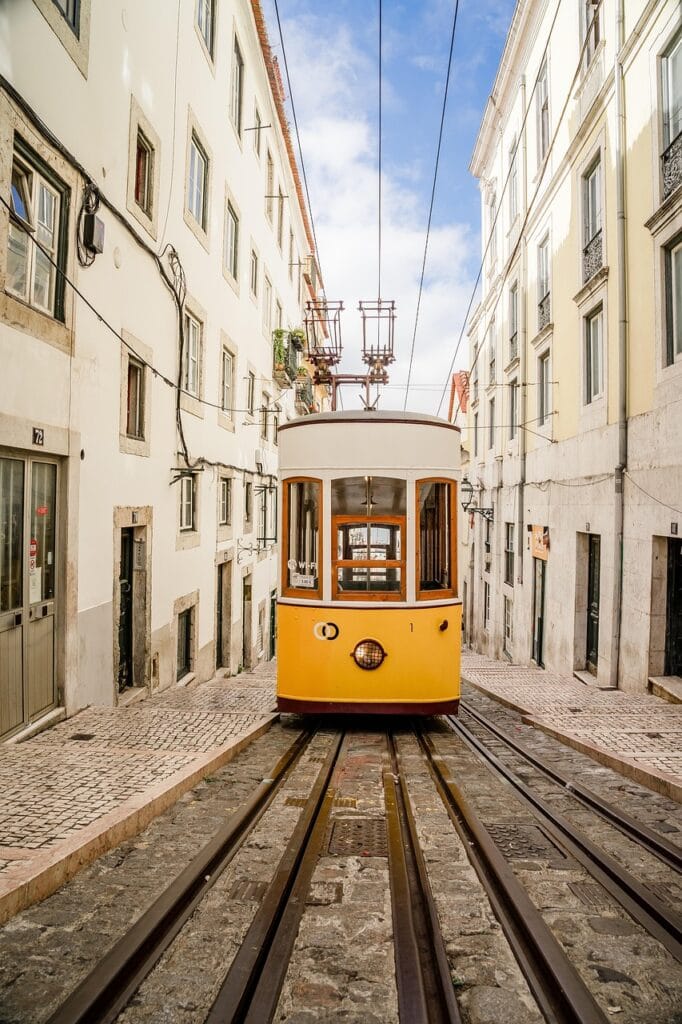


Have an incredible travel adventure to share?
Travel is life
At Caveri, we believe that travel is the gateway to a life filled with purpose, connection, and transformation.
We believe that hrough exploring new cultures, forging connections, and embracing transformative experiences that we truly grow. That’s why we’ve created the best-in-class travel accessories that combine functionality with timeless beauty and style—to inspire your next great adventure.
Whether you’re wandering vibrant city streets or finding peace in nature’s embrace, Caveri is here to inspire your next adventure.

Want to know how it all began?
Read my story and discover what inspired the journey to create Caveri.
LOVE TRAVEL?
Join our affiliate program and earn while sharing the joy of exploration with others. Let’s inspire the world together!
EXPLORE POPULAR PRODUCTS
- Add to cart
- Bundle Sets
Weekend Getaway Kit – Beige
- $109.00
- Rated 5.00 out of 5
- Add to cart
- Bundle Sets
Nomad Kit
- $129.00
- Rated 5.00 out of 5
- Add to cart
- Accessories
Wanderlust Toiletry Bag – Royal Fuchsia
- $79.00
- Rated 5.00 out of 5
- Add to cart
- Accessories
Wanderlust Toiletry Bag – Ink Blue
- $79.00
- Rated 5.00 out of 5
- Out of StockRead more
- Compression Packing Cubes
XLarge Compression Packing Cube
- $69.00
- Rated 5.00 out of 5
- Out of StockRead more
- Compression Packing Cubes
Large Compression Packing Cube
- $59.00
- Rated 5.00 out of 5

